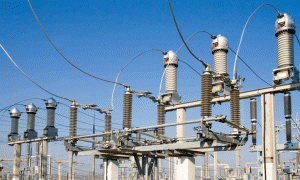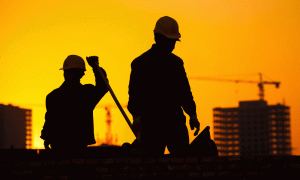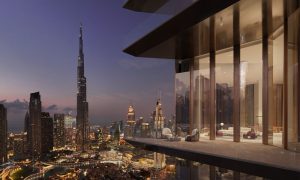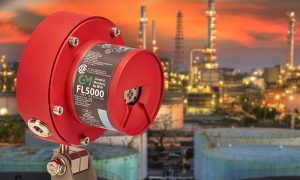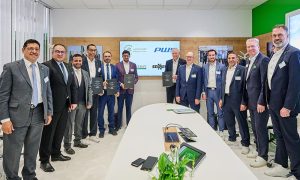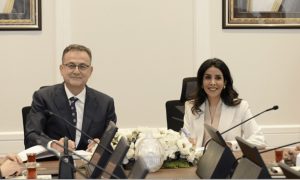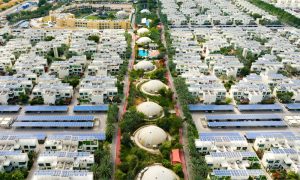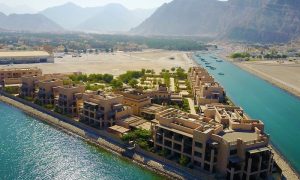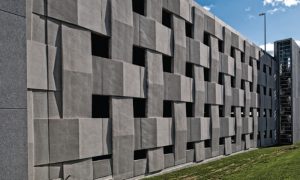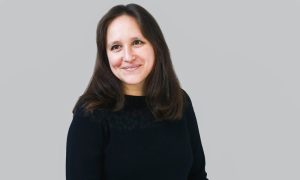Saudi Arabia project update
With one of the world’s fastest growing populations and a high level of unemployment, Saudi Arabia is investing in massive industrialization programmes and a number of infrastructure projects that demand more construction skills

While the economy in Saudi Arabia only entered a mild recession in 2009, construction was one of the hardest-hit industries, with projects worth US $39 billion cancelled last year, according to Euromonitor International.
The country continues to face longterm economic challenges, including high levels of unemployment and one of the world’s fastest population-growth rates. Around 60% of the indigenous population is reckoned to be less than 20 years old and 70% is under 30 years old. Unemployment is highest among Saudis in their twenties — estimated to be close to 25%. Government figures suggest that approximately 175,000 new jobs are being created each year, but the number of new job entrants (which is almost exclusively male) is at least 340,000, reports Euromonitor.
To combat unemployment, local industries are being promoted with increased production of natural gas; a programme which involves multi-billion dollar investments in infrastructure; expected to create 100,000 new jobs per year. A mismatch between the skills of young Saudis and the demands of the labour market has also propelled the government to push forward in creating a huge institution for graduate research. The new university will have an endowment of roughly $10 billion.
Furthermore, in an effort to diversify, the government has embarked on the biggest industrialisation programme ever attempted. The centrepiece of the new programme is an ‘economic city’ costing $26.7 billion. Five other similar cities are planned in different regions. It is hoped that this spending will attract domestic and foreign investment, broaden economic activity and create thousands of new jobs.
Alongside these projects, the government has planned several large public-private investments in real estate, infrastructure and manufacturing which will total $220 billion between 2007-2012. Euromonitor acknowledges the country’s ambitious programme of economic diversification is promising, but it suggests it is unrealistic to expect Saudi Arabia to reduce its oil dependency significantly. The best that can be hoped for is that the investments help to smooth out longrun fluctuations in growth; forecast at 4-5% between 2011 and 2013. This month, Proleads provides details of five key developments underway.
Five ambitious projects to diversify Saudi Arabia’s economy
King Abdullah Economic City
Construction started on King Abdullah Economic City, owned by Emaar Economic City Company, in 2006, with a projected completion date of 2025. The development will comprise four major phases including seaport, industrial zone, business parks and city districts.
The seaport calls for the design and construction of a 13 million m² seaport district in the city. The port will be able to handle 20 million containers annually and is expected to be able to capacitate the world’s largest super container ships and receive 300,000 pilgrims every year.
Dredging work on the port, located between Jeddah and Rabigh, has already commenced and completion is expected in 2020.
King Saud University — women’s college
To address the skills shortage, Saudi Arabia is investing in it educational institutes, in particular those for women considering the majority of people in employment are male.
The King Saud University project calls for the design and construction of a new college for women at King Saud University in Riyadh.
The development will include 12 buildings comprising colleges for dentistry, science, pharmacy, nursing, food and agriculture, computer science, arts, business administration and languages. The project is on track to be completed in December.
Haramain High-Speed Rail Project
The $1.9 billion 450km Makkah to Madinah rail link will be fully electric-run and equipped with the latest signalling and communications system. Developed by Saudi Railways Organisation (SRO), high-speed trains equipped with the latest techniques and equipment will be provided.
Five passenger stations are being built in the first phase, including two in Makkah and two in Jeddah, in each of the downtown areas, and in King Abdulaziz International Airport, and the fifth station will be in Madinah. It is expected that one more station will be established in the second phase in King Abdullah Economic City in Rabigh.
King Abdullah Financial centre
Saudi Arabia’s financial district will be built close to the business centre of Riyadh. The site is 1.6 million m² and the development will have a floor space of three million m².
Having started construction in 2007, the owner, Public Pension Agency, describes the development as a fully self-contained centre for doing business and facilitating investment and enterprise.
The project calls for the design and construction of 28 buildings that will form the centre in Riyadh. Saudi Binladin Group has been awarded the main contract and the development is expected to be completed by March 2012.
Abdulrahman University in Riyadh
Expected to be completed by 2012, Saudi Arabia’s first university for women is expected to cover eight million m², with a built-up area of three million m², situated on King Khalid International Airport Road, north of Riyadh.
The university comprises 13 administration buildings, a 700-bed student hospital, laboratories, research centres and a residential area, including student- and staff accommodation. The university will be able to capacitate 26,000 students.



